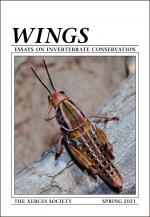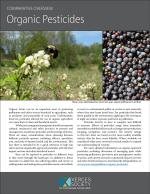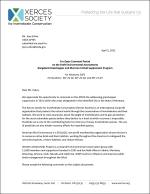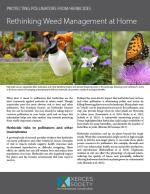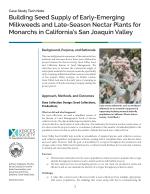As a science-based organization, the Xerces Society produces dozens of publications annually, all of which employ the best available research to guide effective conservation efforts. Our publications range from guidelines for land managers, to brochures offering overviews of key concepts related to invertebrate conservation, from books about supporting pollinators in farmland, to region-specific plant lists. We hope that whatever you are seeking—whether it's guidance on making a home or community garden pollinator-friendly, advice on developing a local pesticide reduction strategy, or detailed information on restoring habitat—you will find it here!
Find Publications
Use the search functions to sort by publication type (books, guidelines, fact sheets, etc.), location, and/or subject (agriculture, gardens, pollinators, pesticides, etc.).
Habitat Installation Guide
These region-and state-specific guidelines provide in-depth practical guidance on how to install and maintain nectar- and pollen-rich habitat for pollinators in the form of wildflower meadow plantings/conservation cover (NRCS Conservation Practice 327) or linear rows of native flowering shrubs/hedgerow plantings (NRCS Conservation Practice 422). Seed mixes and plant recommendations for each region are included in the appendix of each guide.
Habitat Installation Guide
These instructions provide in-depth guidance on how to install linear rows of native flowering shrubs and trees (NRCS Conservation Practice 422) that provide nectar and pollen throughout the growing season, and nesting habitat for bees in the southeast, focused on Florida.
Habitat Installation Guide
These region-and state-specific guidelines provide in-depth practical guidance on how to install and maintain nectar- and pollen-rich habitat for pollinators in the form of wildflower meadow plantings/conservation cover (NRCS Conservation Practice 327) or linear rows of native flowering shrubs/hedgerow plantings (NRCS Conservation Practice 422). Seed mixes and plant recommendations for each region are included in the appendix of each guide.
Habitat Installation Guide
These region-and state-specific guidelines provide in-depth practical guidance on how to install and maintain nectar- and pollen-rich habitat for pollinators in the form of wildflower meadow plantings/conservation cover (NRCS Conservation Practice 327) or linear rows of native flowering shrubs/hedgerow plantings (NRCS Conservation Practice 422). Seed mixes and plant recommendations for each region are included in the appendix of each guide.
Essays on Invertebrate Conservation
This year we are celebrating our fiftieth anniversary. Since it was launched in 1971, the Xerces Society has grown to become a widely respected organization, leading the way on the protection of insects and invertebrates in North America and beyond. The articles in this issue reflect our growth and achievements over the last half century.
A Comparative Overview
This fact sheet is intended to be a quick reference to help you select and use organically-approved pesticides with the least impact on bees and other beneficial insects.
Minimizing Risks to Pollinators and Beneficial Insects
Even pesticides allowed for use in organic agriculture can cause harm to bees and other beneficial insects. This guide provides a brief overview of how to select and apply pesticides for organic farm operations while minimizing pollinator mortality.
For Montana 2021; EA Numbers: MT-21-01, MT-21-02, and MT-21-03
Habitat Installation Guide
These region-and state-specific guidelines provide in-depth practical guidance on how to install and maintain nectar- and pollen-rich habitat for pollinators in the form of wildflower meadow plantings/conservation cover (NRCS Conservation Practice 327) or linear rows of native flowering shrubs/hedgerow plantings (NRCS Conservation Practice 422). Seed mixes and plant recommendations for each region are included in the appendix of each guide.
This form was designed to help with habitat installation planning. For more information see the Habitat Installation Guides.

